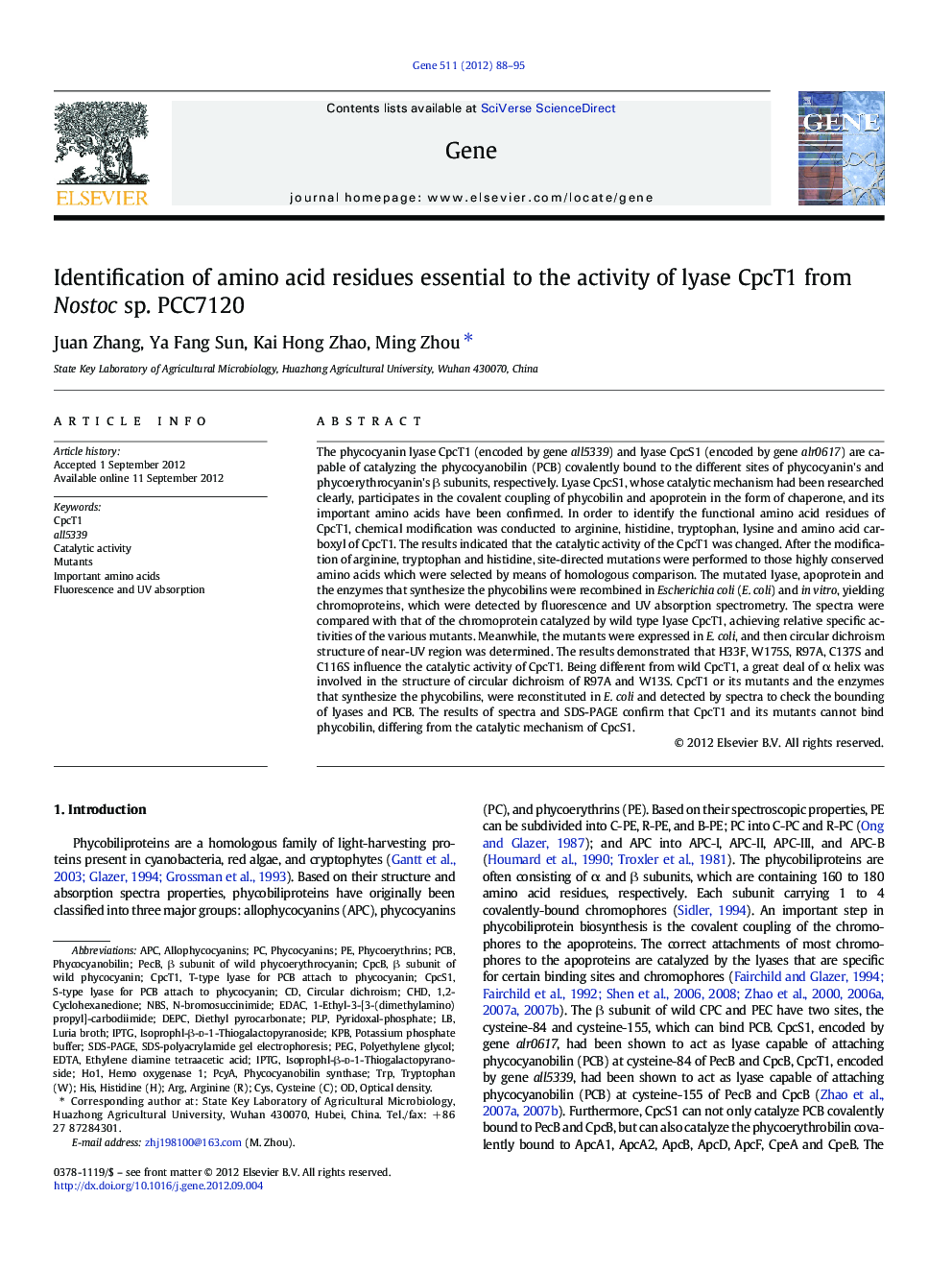| Article ID | Journal | Published Year | Pages | File Type |
|---|---|---|---|---|
| 2817549 | Gene | 2012 | 8 Pages |
The phycocyanin lyase CpcT1 (encoded by gene all5339) and lyase CpcS1 (encoded by gene alr0617) are capable of catalyzing the phycocyanobilin (PCB) covalently bound to the different sites of phycocyanin's and phycoerythrocyanin's β subunits, respectively. Lyase CpcS1, whose catalytic mechanism had been researched clearly, participates in the covalent coupling of phycobilin and apoprotein in the form of chaperone, and its important amino acids have been confirmed. In order to identify the functional amino acid residues of CpcT1, chemical modification was conducted to arginine, histidine, tryptophan, lysine and amino acid carboxyl of CpcT1. The results indicated that the catalytic activity of the CpcT1 was changed. After the modification of arginine, tryptophan and histidine, site-directed mutations were performed to those highly conserved amino acids which were selected by means of homologous comparison. The mutated lyase, apoprotein and the enzymes that synthesize the phycobilins were recombined in Escherichia coli (E. coli) and in vitro, yielding chromoproteins, which were detected by fluorescence and UV absorption spectrometry. The spectra were compared with that of the chromoprotein catalyzed by wild type lyase CpcT1, achieving relative specific activities of the various mutants. Meanwhile, the mutants were expressed in E. coli, and then circular dichroism structure of near-UV region was determined. The results demonstrated that H33F, W175S, R97A, C137S and C116S influence the catalytic activity of CpcT1. Being different from wild CpcT1, a great deal of α helix was involved in the structure of circular dichroism of R97A and W13S. CpcT1 or its mutants and the enzymes that synthesize the phycobilins, were reconstituted in E. coli and detected by spectra to check the bounding of lyases and PCB. The results of spectra and SDS-PAGE confirm that CpcT1 and its mutants cannot bind phycobilin, differing from the catalytic mechanism of CpcS1.
► First time looked into which amino acids are important for catalysis in CpcT. ► Proved that this lyase can’t bind PCB first, it is different from other lyases. ► Used two methods together to confirm the essential amino acids. ► Assay the activity of mutants by reconstituted in E. Coli and in vitro.
